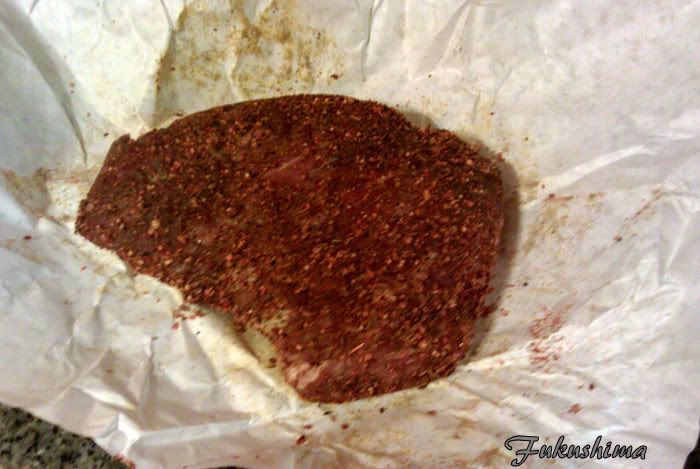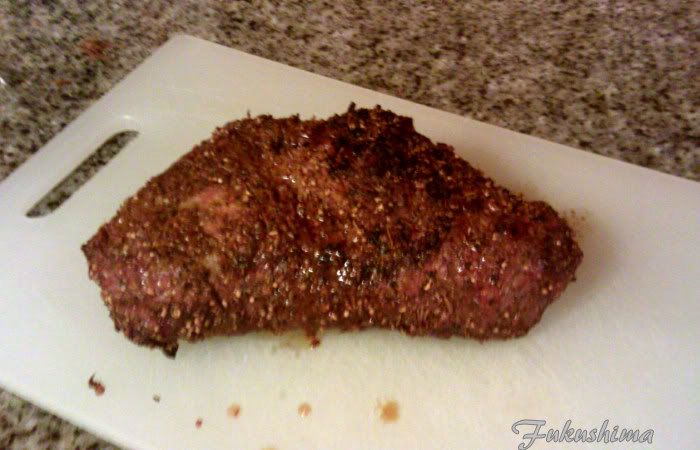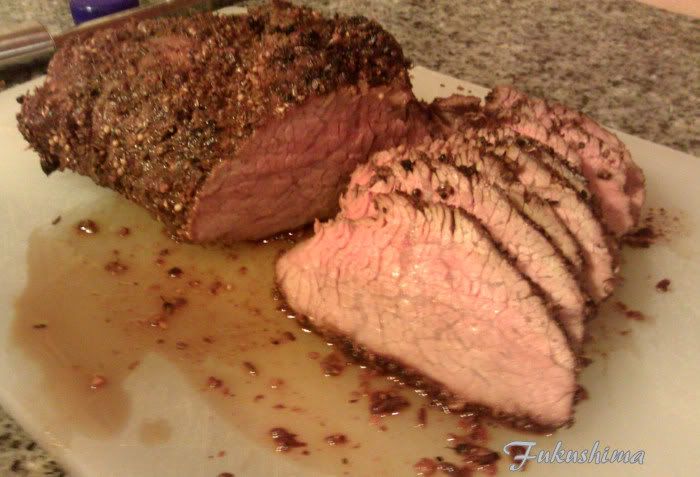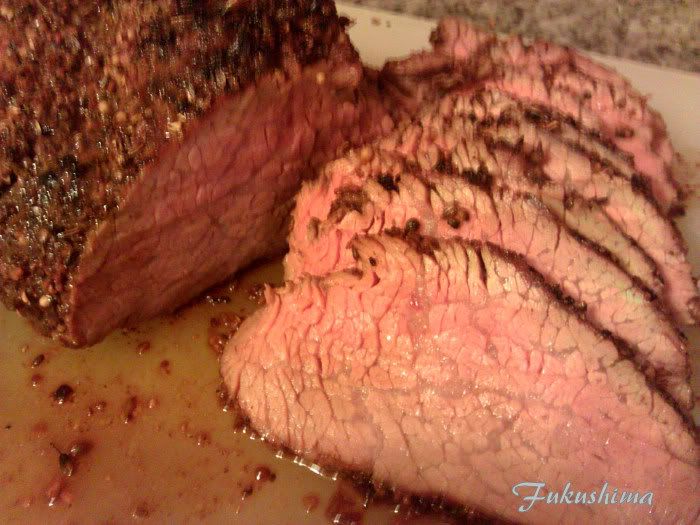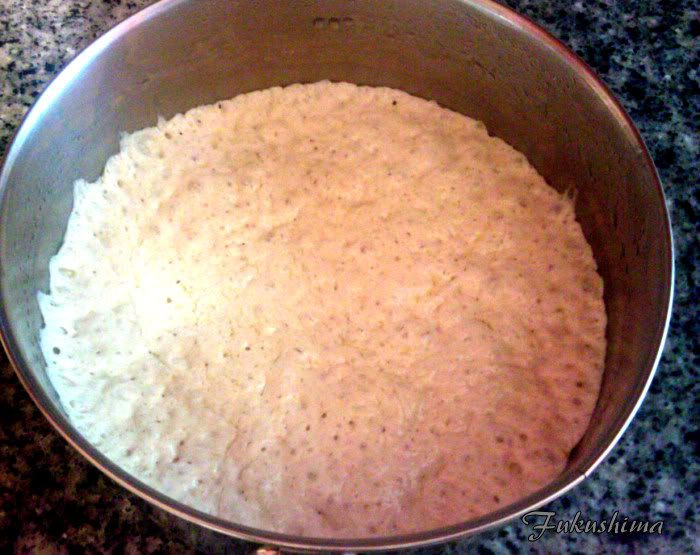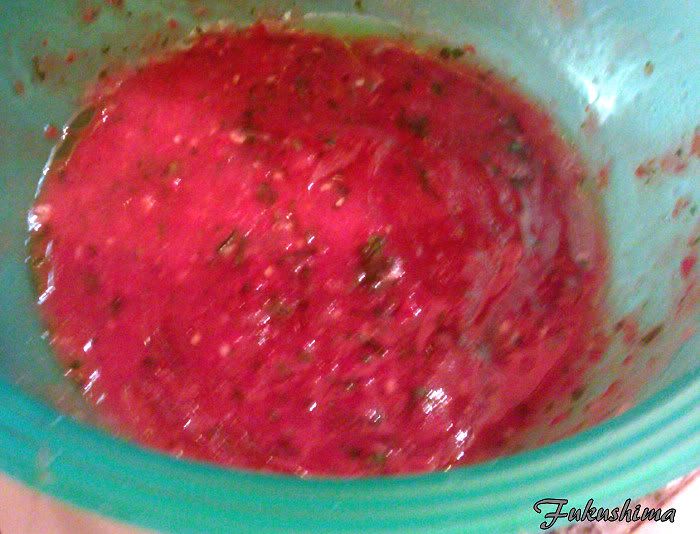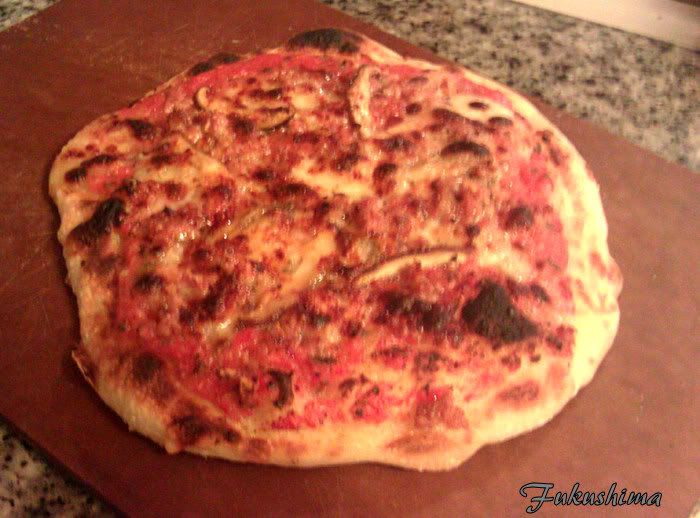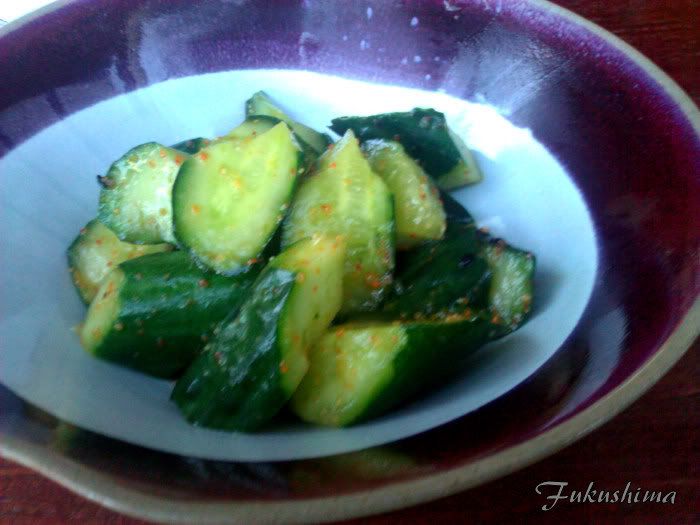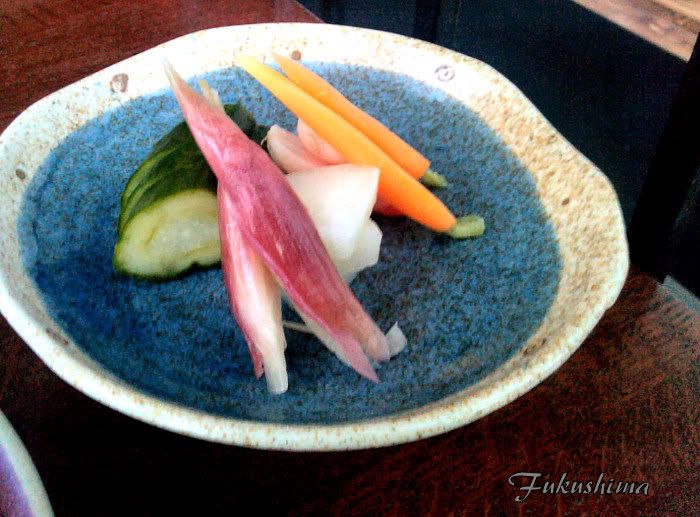Okay Rachel, this is for you. I do have a few variations on tartar sauce, the major thing being home made versus store bought. I prefer making tartar sauce from scratch in terms of consistency of the sauce and overall control in ingredients. But, it is hard to beat the convenience of ready made mayonnaise.
Easy and Fast Tartar sauce:
3/4 cup Mayonnaise, Best Foods
1/8 cup heavy cream
2 tablespoons dill pickle juice
1 teaspoon Worcestershire sauce
1 teaspoon each chopped capers and pickles
1 teaspoon finely chopped onion or shallot (shallot is better, onion is cheaper)
1/2 teaspoon finely snipped chives and parsley combined
White pepper to taste
Combine mayonnaise, cream, pickle juice and Worcestershire sauce, adjust with half of cream first to get desired texture. You want a consistency that is slightly thicker than the cream itself. Should hold to spoon when tipped.
Add in vegetables and blend. Allow to sit for 15 minutes if possible. Season with white pepper to adjust heat level. Allow to sit and chill for additional 15 minutes or more for best results.
Not at all Easy and Fast Tartar sauce:
3/4 cup home made mayonnaise
1/8 cup heavy cream
2 tablespoons dill pickle juice
1 teaspoon Worcestershire sauce
1 teaspoon each chopped capers and pickles
1 teaspoon finely chopped onion or shallot (shallot is better, onion is cheaper)
1/2 teaspoon finely snipped chives and parsley combined
White pepper to taste
Making mayonnaise:
2 extra large fresh eggs. Pastuerized eggs will work, I really prefer to get very fresh local aggs
1-3/4 cups of oil, normally I use a very good olive oil (grapeseed oil is a great choice too)
1/4 teaspoon fine salt (I use fine sea salt)
1-1/2 tablespoons lemon juice (or vinegar)
1/2 teaspoon mustard powder
Blend egg yolks thoroughly, this can be done by hand, I use a food processor (more to follow). Do something with the egg whites, you don't need them for this. Add the mustard powder. Now, you must add the oil very slowly, go too fast an it will not emulsify. Here is why I use a food processor, most of them have a pusher that has a small hole in the bottom of the pusher for the feed tube. If you fill this with half of the oil, it will trickle in at just the correct flow. If you go by hand (I will use a whisk sometimes) then you need to add a drop or two every few seconds. Once the oil is completely incorporated, add the lemon juice and salt. Taste and adjust salt.
Note: the mustard powder is not needed and some people dislike it. But, mustard powder is a great emulsifier and makes creating the egg/oil emulsion much easier.
Now, on to the Tartar Sauce...
Combine
mayonnaise, cream, pickle juice and Worcestershire sauce, adjust with
half of cream first to get desired texture. You want a consistency that
is slightly thicker than the cream itself. Should hold to spoon when
tipped.
Add in vegetables and blend. Allow to sit for 15 minutes if possible. Season with white pepper to adjust heat level. Allow to sit and chill for additional 15 minutes or more for best results.
To make this into Remoulade:
Delete the pickle juice, add champagne vinegar
Delete the pickles, double capers
Add finely chopped celery
Delete chives, add tarragon in it's place
Search This Blog
Friday, September 7, 2012
Tuesday, September 4, 2012
Aloha Tri-tip
Now, you;'re probably wondering what about tr-tip is Pacific Rim, well, it is just that, as I used a rub from the Aloha Spice Company, their Organic Aloha Prime Steak Seasoning and Rub. I received this from a friend, Rob, who was on a visit to the islands, and as he met our friend Roy, this package came to be purchased. Now, the only two things that appear to make this Hawaiian are the fact that it is made there and that it has 'Alaea salt in it. And that is good enough for me, I have grown up with the use of 'Alaea salt as a seasoning, and steak is especially good with it.
I had a tri-tip, a nice Choice Black Angus tri-tip in fact, and it was to be the test vehicle for this. I also decided to break out my Weber Smokey Joe Gold mini-kettle. This was a gift from my brother, and I have been meaning to run a cook on it. So, the tri-tip was liberally covered with the rub, wrapped in butcher paper and allowed to sit while I fired up the mini-kettle.
From here, the kettle was filled with lump, fired up and allowed to come to temperature, which was around 225F, indeed, I would do this low-n-slow up to 115F internal, at least that was the plan. The kettle-ette was rocking in no time, I am already seeing benefits here. So the meat hit the grate.
So, the texture of the rub is a little coarser than I normally like, I prefer a medium grained texture and no whole spices, but, it was a gift and deserves and open mind. You can see it gets a great color and there are a lot of spices present. The kettle was closed and about 30 minutes passed, a quick flip and another 30 minutes, check internal, 100F, okay, another 10 minutes, 135F internal WTF!!! Off the kettle. No sear. How did it climb so fast? There must have been operator error here.
Well, just in time, off to rest under a foil tent for 20 minutes. You always want to let the meat rest, a small cut like this, 20 minutes is perfect. You could go longer actually. In any event, a few slices and here it goes, a nice medium in my books. I was hoping for medium rare, but, well, operator error is what it is.
There was plenty of moisture left in the meat, it tasted great, with the beef still from and center, but, the edges had a great balance of spices and salt, a very nice nip of chile and black and white pepper, this is a good rub. It was a little too coarse, but, I will use it again. Glad I have some more.
There is nothing easier than working with good meat in a kitchen, and this cut did not disappoint. I know many folks are tuning in to the fact that even with a Certified Black Angus label, not all Angus beef is really from true Black Angus cattle. Since the ranch this is purchased from offers registration and tracking of it's animals, the lineage is a true Angus. With great beef and a very good rub, dinner tasted great. That meat was as tender and moist at the photos look.
I had a tri-tip, a nice Choice Black Angus tri-tip in fact, and it was to be the test vehicle for this. I also decided to break out my Weber Smokey Joe Gold mini-kettle. This was a gift from my brother, and I have been meaning to run a cook on it. So, the tri-tip was liberally covered with the rub, wrapped in butcher paper and allowed to sit while I fired up the mini-kettle.
Rubbed up
From here, the kettle was filled with lump, fired up and allowed to come to temperature, which was around 225F, indeed, I would do this low-n-slow up to 115F internal, at least that was the plan. The kettle-ette was rocking in no time, I am already seeing benefits here. So the meat hit the grate.
Meat On!
So, the texture of the rub is a little coarser than I normally like, I prefer a medium grained texture and no whole spices, but, it was a gift and deserves and open mind. You can see it gets a great color and there are a lot of spices present. The kettle was closed and about 30 minutes passed, a quick flip and another 30 minutes, check internal, 100F, okay, another 10 minutes, 135F internal WTF!!! Off the kettle. No sear. How did it climb so fast? There must have been operator error here.
Meat Off! Meat Off!
Well, just in time, off to rest under a foil tent for 20 minutes. You always want to let the meat rest, a small cut like this, 20 minutes is perfect. You could go longer actually. In any event, a few slices and here it goes, a nice medium in my books. I was hoping for medium rare, but, well, operator error is what it is.
Yeah, I can eat this
There was plenty of moisture left in the meat, it tasted great, with the beef still from and center, but, the edges had a great balance of spices and salt, a very nice nip of chile and black and white pepper, this is a good rub. It was a little too coarse, but, I will use it again. Glad I have some more.
A close-up
There is nothing easier than working with good meat in a kitchen, and this cut did not disappoint. I know many folks are tuning in to the fact that even with a Certified Black Angus label, not all Angus beef is really from true Black Angus cattle. Since the ranch this is purchased from offers registration and tracking of it's animals, the lineage is a true Angus. With great beef and a very good rub, dinner tasted great. That meat was as tender and moist at the photos look.
Sunday, September 2, 2012
Pizza-the long dough home
I made some pizza, this was all stated when people kept mentioning pizza within earshot and Facebook shot of me. Suddenly I had to have pizza. Of course, nothing is ever simple around here. Since I am terrible at keeping a sourdough starter alive, I have been playing around with preferments for dough. Not unlike a Biga, but, with a slightly longer process in my case.
It starts with 1 package of commercial bread yeast, 1 teaspoon of fine sugar and 1 cup of warm water. This is all mixed together and allowed to sit, in the bowl, open, for 4 hours. Then it is closed off and placed in the refrigerator for another 12 or so hours, I am shooting for a slight, but, controlled fermentation of the starter. At this point, the starter will have a slight aroma, but, not the strong odor of a true sour starter. I mix up 2 cups of Caputo 00 flour, 1 teaspoon of fine salt, 1.5 teaspoons of a very good olive oil and an additional 1/2 cup of warm water. This is all tossed into the mixer with a dough hook, and worked for 10 minutes. The dough should pull cleanly from the bowl. I go straight to a oiled bowl and cover with plastic wrap, then into the refrigerator for another 24 hours.
It is then time to form the balls, one for a large pizza, or four for a smaller 9" pie. Let them proof for a few hours. I like to proof my dough in a pan, covered loosely with plastic wrap and in a cold oven, it adds a little stability to the process of proofing. Here is the dough for proof.
Once they are proofed, the balls will have spread out, this is a very soft dough, it really needs to be handled with floured hands and worked quickly. It has a lot of spring, so it is ideal for a thin roll out or pulled crust. I worked these out to about 9" or so, topped lightly and onto the kettle running as hot as it would go, with lump and apple wood. The pizzas were cooked on a cast iron pizza pan, which works great for this. I will line the top of the kettle with a little foil, this aids in browning.
Oh, and the sauce, well, everything, this is the season of plenty in California right now, so the sauce was a raw sauce of seeded and pureed organic Early Girl tomatoes, basil, Italian Parsley, a very good olive oil and a little organic garlic.
This along with some great cheese, Maldon salt flakes, fresh ground pepper, makes for some great pizza. For instance...
The dough performed beautifully, had just a hint of sourness and sprang nicely in the heat, the crisp surface and tender sponge worked great. The sauce was exceptional, just cooked, it was sweet and sang of tomatoes, the herbs and cheese working just off the edges. It was just an excellent cook.
It starts with 1 package of commercial bread yeast, 1 teaspoon of fine sugar and 1 cup of warm water. This is all mixed together and allowed to sit, in the bowl, open, for 4 hours. Then it is closed off and placed in the refrigerator for another 12 or so hours, I am shooting for a slight, but, controlled fermentation of the starter. At this point, the starter will have a slight aroma, but, not the strong odor of a true sour starter. I mix up 2 cups of Caputo 00 flour, 1 teaspoon of fine salt, 1.5 teaspoons of a very good olive oil and an additional 1/2 cup of warm water. This is all tossed into the mixer with a dough hook, and worked for 10 minutes. The dough should pull cleanly from the bowl. I go straight to a oiled bowl and cover with plastic wrap, then into the refrigerator for another 24 hours.
After 24 hours, sooo bubbly
It is then time to form the balls, one for a large pizza, or four for a smaller 9" pie. Let them proof for a few hours. I like to proof my dough in a pan, covered loosely with plastic wrap and in a cold oven, it adds a little stability to the process of proofing. Here is the dough for proof.
Dough balls, they look so good at this point
Once they are proofed, the balls will have spread out, this is a very soft dough, it really needs to be handled with floured hands and worked quickly. It has a lot of spring, so it is ideal for a thin roll out or pulled crust. I worked these out to about 9" or so, topped lightly and onto the kettle running as hot as it would go, with lump and apple wood. The pizzas were cooked on a cast iron pizza pan, which works great for this. I will line the top of the kettle with a little foil, this aids in browning.
Oh, and the sauce, well, everything, this is the season of plenty in California right now, so the sauce was a raw sauce of seeded and pureed organic Early Girl tomatoes, basil, Italian Parsley, a very good olive oil and a little organic garlic.
Early Girl sauce
This along with some great cheese, Maldon salt flakes, fresh ground pepper, makes for some great pizza. For instance...
Pizza Margherita
Sausage and Mushroom
The dough performed beautifully, had just a hint of sourness and sprang nicely in the heat, the crisp surface and tender sponge worked great. The sauce was exceptional, just cooked, it was sweet and sang of tomatoes, the herbs and cheese working just off the edges. It was just an excellent cook.
Saturday, September 1, 2012
Izakaya Yazuki and the meaning of food
I recently heard about a new restaurant, in Japanese terms it would be called an Izakaya, not really a place meant to be for eating dinner, so much as a place to grab a snack and some sake. And although it is not my norm to write restaurant reviews, as there are so many who do a better job of that, I feel that there is an interesting element to this experience, at least for me. It has to do with the role that food plays at an emotional level. To be sure, the food at Yazuki is well executed and the use of both local and Japanese ingredients is quite typical for any restaurant hitting the scene in San Francisco needs to have. But, they use nuka and koji in many of their dishes.
Koji, which is a mold, is a traditional ingredient for making fermented foods in Japan, it is one of those ingredients that defines a cuisine, you truly do not have real Japanese food without the effects of Koji and it's by products of nuka, sake and shoyu. Yazuki has chosen to focus on these ingredients and the effect they have on aroma, taste and texture. And the effect was stunning to me.
I grew up in a American household, quite typical in many ways, but, the one way were varied widely from our surrounding culture was in our food. My grandmothers used ingredients, such as nuka, miso, shoyu and sake, these ingredients informed the aromas in our kitchens. We always had preserved, femernted and pickled vegetables that were in various stages of each process. This is the food of my childhood, and I rarely taste anything like it. I taste it at Yazuki. I ordered the Tsunemono and something called Pirikara Kuri, the first taste of the Pirikara brought me great pleasure, as it was both subtle yet had a depth and complexity that is hard to explain, the food had the spice from Shichimi, a complex chili powder typical of Japanese modern cuisine and the particular texture of aged Japanese pickles, that I can only describe as barely wilted.
Then there was the Tsunemono, the highlight of the night for me actually. I could have eaten just this and some great rice and my night would have been made. The taste and texture of these fermented vegetables, which are left in nuka, a fermented rice bran product. Called, more properly, Nukazuke, this dish was instantly as familiar as my childhood, the aromas and textures, as well as the very vegetables were what I associated with my grandmothers kitchens. Emotionally, this hit me in the heart. I live for moments like this, were a food or drink evokes memories, that are so tangible and real, not some distant fog of memory, but, a visceral reaction. At that point, I was alone at my table, eating pickles, dead sober and having the best dining experience of my year. Perhaps many years, as I was, in a very direct way, dining with my mother and grandmothers.
This is the power of food to me, I have rarely seen it. I can remember only a few time, the most recent being on my 40th birthday, my dads 77th birthday, when I could not be with him. My friends Arleigh and Diane brought a bottle of wine that recalled the scents of the old California Flower Market, it tasted of the air in the market, it brought tears to my eyes. Only one other time, when I saw my dad tear up, as he ate home made Satsuma Age and he mentioned how it tasted of his mother's cooking, have I seen something as emotionally satisfying. The power of an aroma or a taste, to transcend decades, to defy age, and to bring one back to that those feelings and memories.
The final dish that had this effect, a tofu, sukui tofu, a soft, freshly made tofu, which, as a result of not being aged, is so soft, it takes the shape of the basket in which it is made, is another all to rare dish, we can buy kinugoshi tofu, which is similar but lacks the delicacy and immediancy of the freshly made tofu. Usually served with condiments, in this case a flavored shoyu, flake salt and minced herbs of ginger, scallion and garlic, this dish was something that as a child, I hated. It was just not right, but, as an adult, I find tremendous satisfaction and joy in this dish. I cannot help but be reminded of all those times I pushed it away, only to be told by my parents that someday, you will love eating it. And they were right, again.
There were other dishes, all of which were very well executed and had a hallmark of the cuisine I grew up knowing as Japanese food, which is a subtlety in the flavors. Japanese cuisine in America is all too often adjusted to satisfy the much stronger flavors and textures of the American palate. The Japanese cuisine I grew up with has layers and flavors that float across the palate, but, they need to be considered. Each dish, even the tempura, which bore an amazingly delicate crust, not over every bit of the meat or vegetable, but, just enough to add a bit of crunch and flavor, the shoyu that was light and complex, even the use of green tea salt, a delicate complexity on normal salt, all spoke to a Japanese meal prepared in a Japanese manner.
A Glossary of Terms:
Shoyu - soy sauce in English
Miso - fermented bean paste
Kuri - Cucumber
Koji - a mold, one of two types of fungus used in production of sake, miso
Zuke - fermented vegetable
Tsunemono - 'pickled things', normally reserved for vinegar pickles
(and finally, sorry about the phone pics, terrible, I loaned my camera out to a friend running for office)
Koji, which is a mold, is a traditional ingredient for making fermented foods in Japan, it is one of those ingredients that defines a cuisine, you truly do not have real Japanese food without the effects of Koji and it's by products of nuka, sake and shoyu. Yazuki has chosen to focus on these ingredients and the effect they have on aroma, taste and texture. And the effect was stunning to me.
I grew up in a American household, quite typical in many ways, but, the one way were varied widely from our surrounding culture was in our food. My grandmothers used ingredients, such as nuka, miso, shoyu and sake, these ingredients informed the aromas in our kitchens. We always had preserved, femernted and pickled vegetables that were in various stages of each process. This is the food of my childhood, and I rarely taste anything like it. I taste it at Yazuki. I ordered the Tsunemono and something called Pirikara Kuri, the first taste of the Pirikara brought me great pleasure, as it was both subtle yet had a depth and complexity that is hard to explain, the food had the spice from Shichimi, a complex chili powder typical of Japanese modern cuisine and the particular texture of aged Japanese pickles, that I can only describe as barely wilted.
Pirikara Kuri
Then there was the Tsunemono, the highlight of the night for me actually. I could have eaten just this and some great rice and my night would have been made. The taste and texture of these fermented vegetables, which are left in nuka, a fermented rice bran product. Called, more properly, Nukazuke, this dish was instantly as familiar as my childhood, the aromas and textures, as well as the very vegetables were what I associated with my grandmothers kitchens. Emotionally, this hit me in the heart. I live for moments like this, were a food or drink evokes memories, that are so tangible and real, not some distant fog of memory, but, a visceral reaction. At that point, I was alone at my table, eating pickles, dead sober and having the best dining experience of my year. Perhaps many years, as I was, in a very direct way, dining with my mother and grandmothers.
Tsunemono/Nukazuke
This is the power of food to me, I have rarely seen it. I can remember only a few time, the most recent being on my 40th birthday, my dads 77th birthday, when I could not be with him. My friends Arleigh and Diane brought a bottle of wine that recalled the scents of the old California Flower Market, it tasted of the air in the market, it brought tears to my eyes. Only one other time, when I saw my dad tear up, as he ate home made Satsuma Age and he mentioned how it tasted of his mother's cooking, have I seen something as emotionally satisfying. The power of an aroma or a taste, to transcend decades, to defy age, and to bring one back to that those feelings and memories.
The final dish that had this effect, a tofu, sukui tofu, a soft, freshly made tofu, which, as a result of not being aged, is so soft, it takes the shape of the basket in which it is made, is another all to rare dish, we can buy kinugoshi tofu, which is similar but lacks the delicacy and immediancy of the freshly made tofu. Usually served with condiments, in this case a flavored shoyu, flake salt and minced herbs of ginger, scallion and garlic, this dish was something that as a child, I hated. It was just not right, but, as an adult, I find tremendous satisfaction and joy in this dish. I cannot help but be reminded of all those times I pushed it away, only to be told by my parents that someday, you will love eating it. And they were right, again.
Sukui Tofu with Condiments
There were other dishes, all of which were very well executed and had a hallmark of the cuisine I grew up knowing as Japanese food, which is a subtlety in the flavors. Japanese cuisine in America is all too often adjusted to satisfy the much stronger flavors and textures of the American palate. The Japanese cuisine I grew up with has layers and flavors that float across the palate, but, they need to be considered. Each dish, even the tempura, which bore an amazingly delicate crust, not over every bit of the meat or vegetable, but, just enough to add a bit of crunch and flavor, the shoyu that was light and complex, even the use of green tea salt, a delicate complexity on normal salt, all spoke to a Japanese meal prepared in a Japanese manner.
A Glossary of Terms:
Shoyu - soy sauce in English
Miso - fermented bean paste
Kuri - Cucumber
Koji - a mold, one of two types of fungus used in production of sake, miso
Zuke - fermented vegetable
Tsunemono - 'pickled things', normally reserved for vinegar pickles
(and finally, sorry about the phone pics, terrible, I loaned my camera out to a friend running for office)
Subscribe to:
Posts (Atom)
